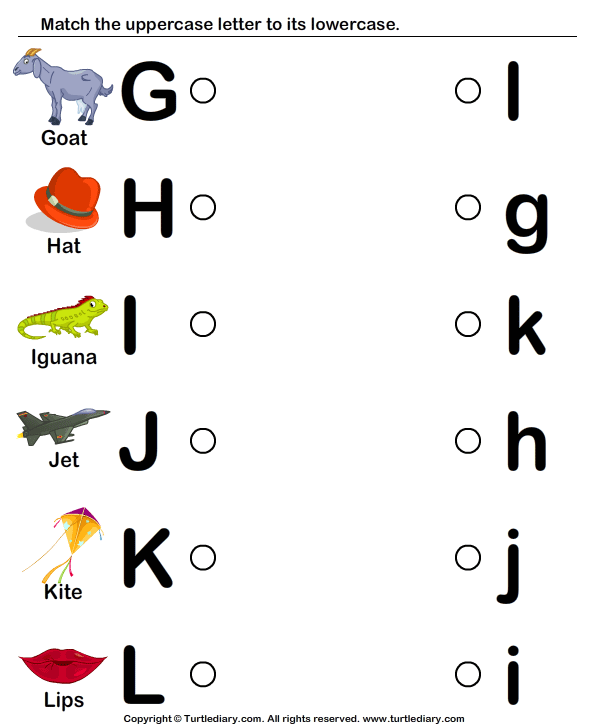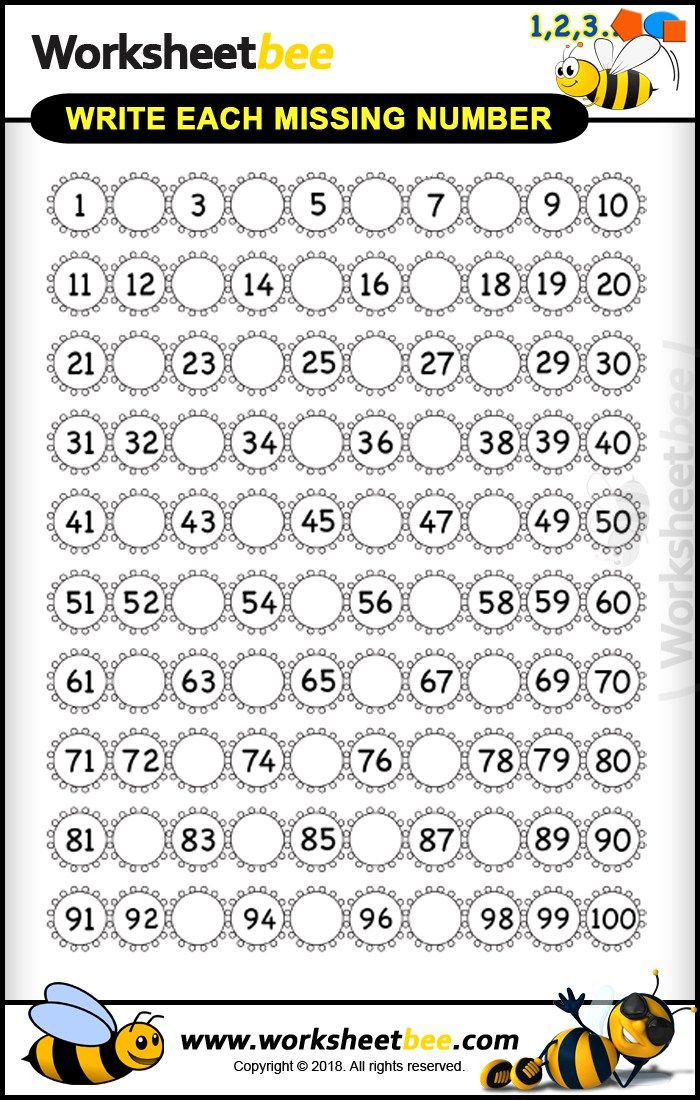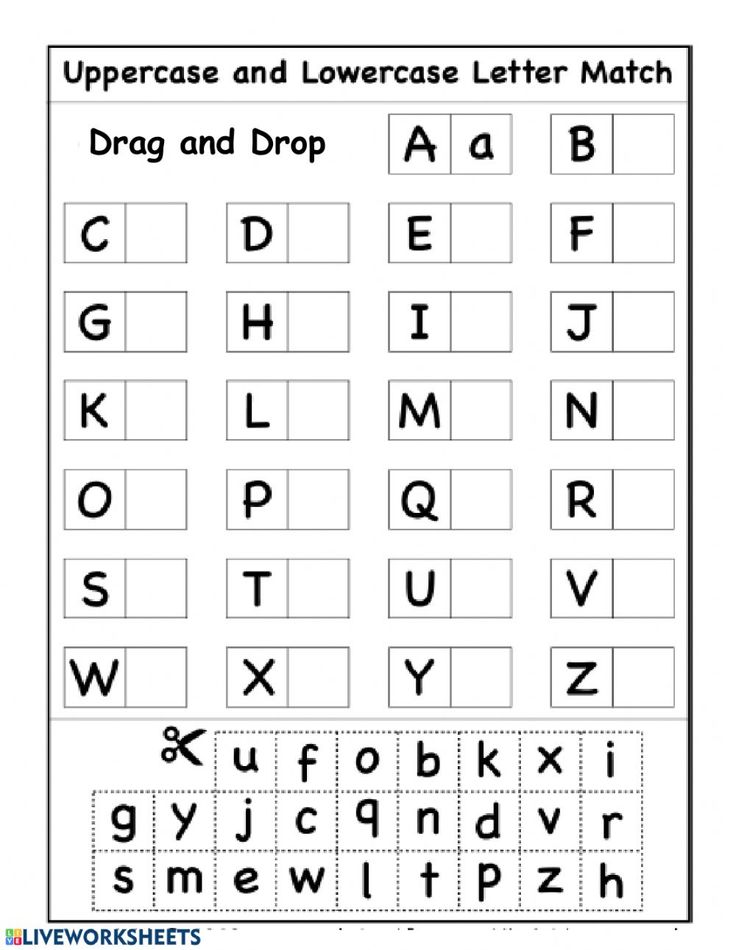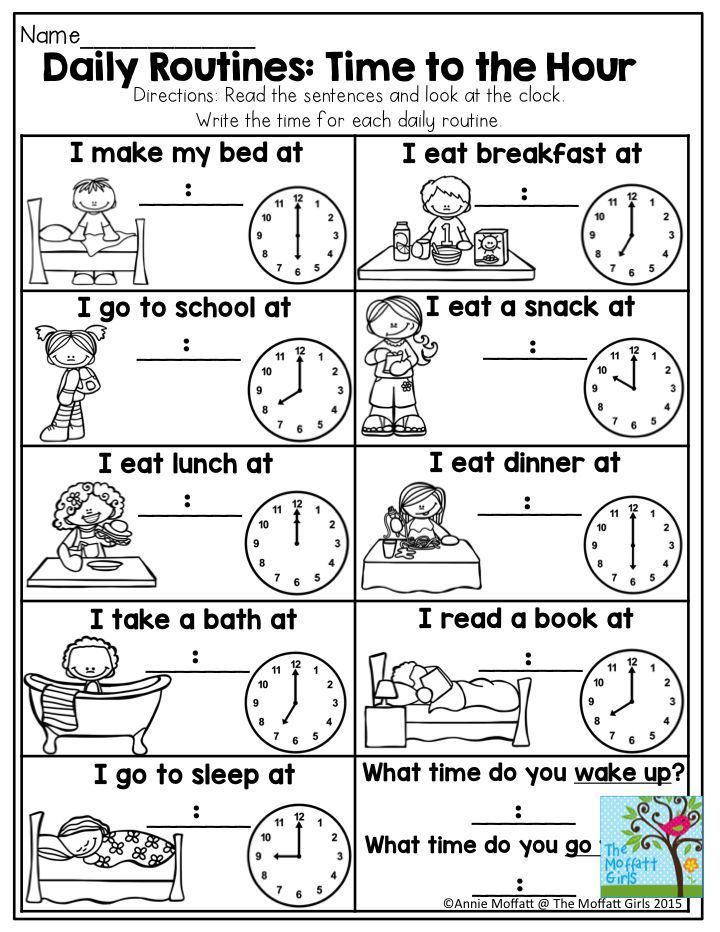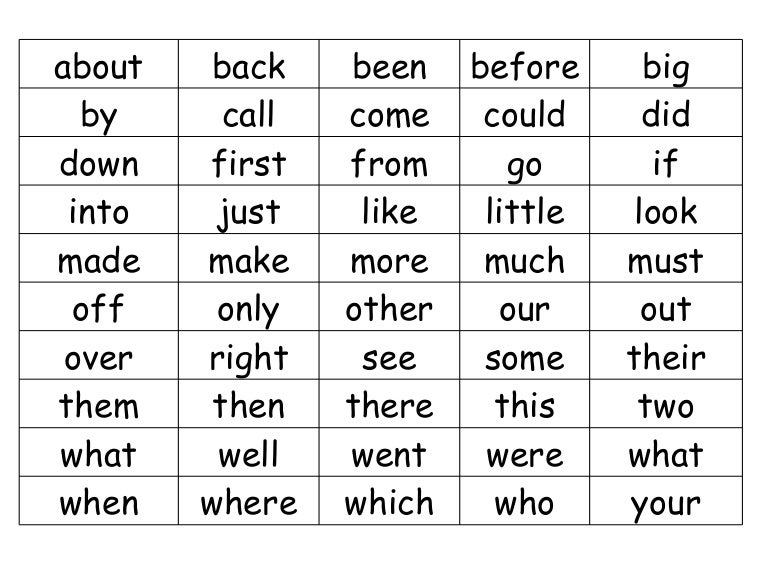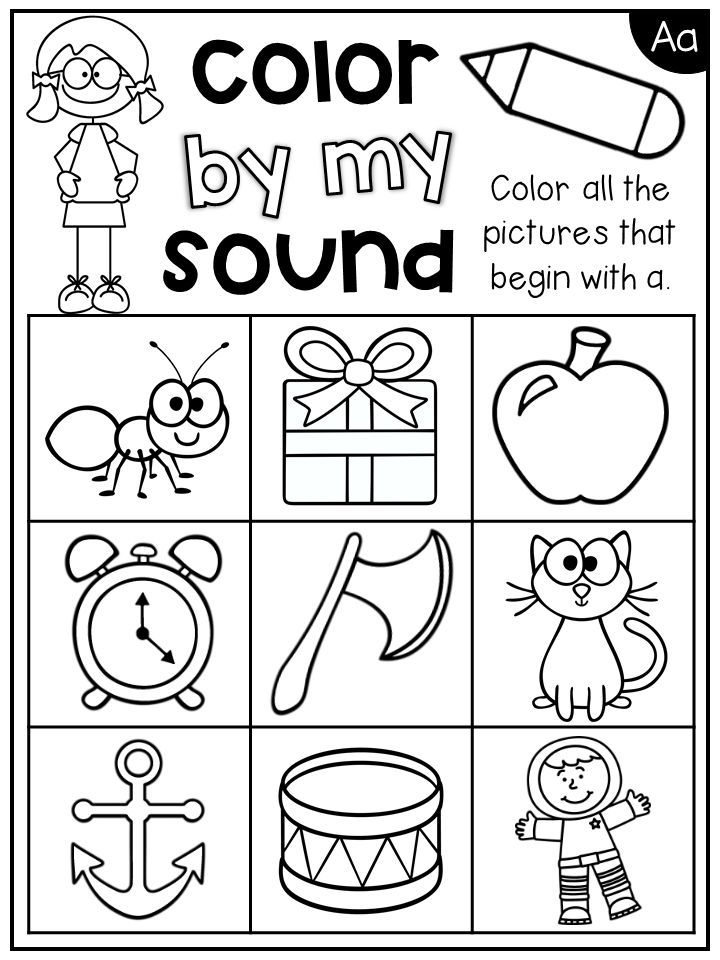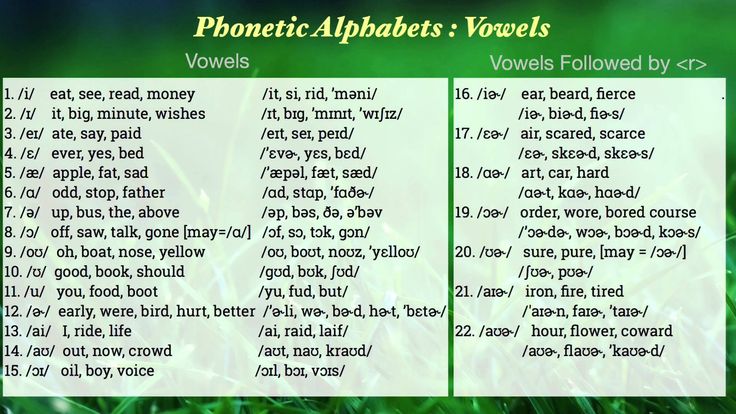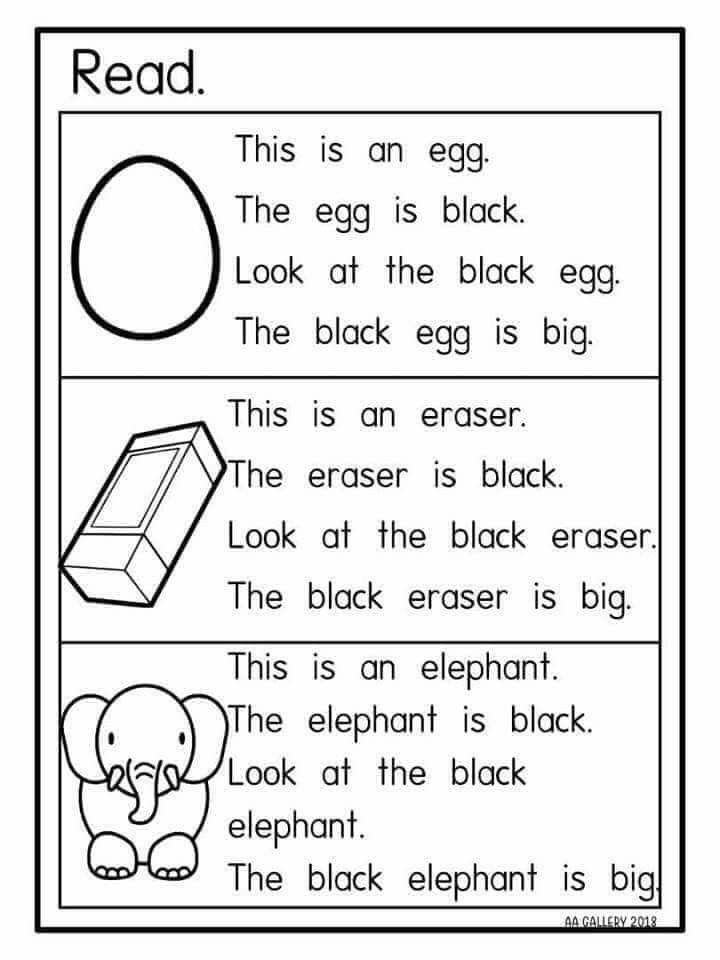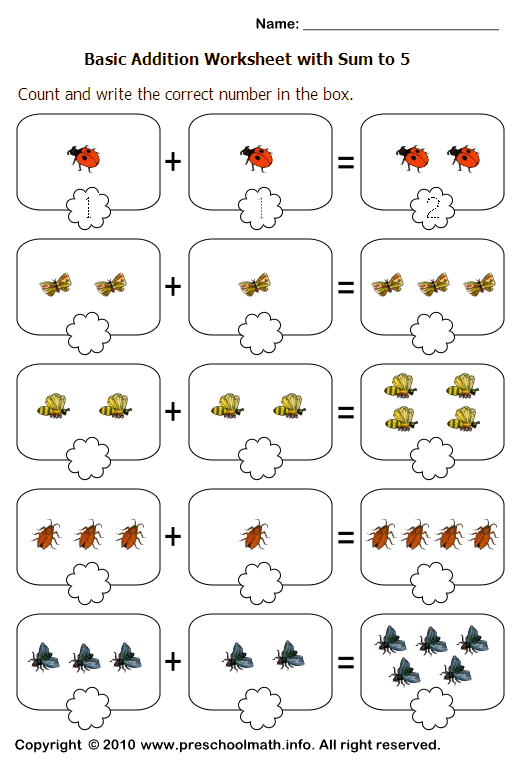Alphabet sounds song for kindergarten
The Best Alphabet Songs for Kindergarten
If there is one thing I know for sure, it’s that kindergarteners LOVE music. Turn on a song and you’ll instantly have 25 little heads bobbing as they sing along – whether they know the tune or not.
Adding an Alphabet song to our morning routine has been one of the best things for my class. We choose one of these alphabet videos to sing along to every morning, and I have seen how it has impacted my students’ growth in a positive way.
Why? Music gives the brain rhyme and rhythm which gives it cues to recall information with.
How many of us still break into song with Gwen Stefani whenever we think of spelling the word “bananas”?
I have gathered a list of our favorite alphabet songs for kindergarten. Even though we sing these repeatedly, my class never gets tired of them!
Watch the Letters Get Down
Watch the Letters Get Down is one of our FAVORITE alphabet videos! This is the alphabet song that I find myself singing as I prepare dinner or try to relax ????. It’s that catchy!
This letter sounds review video combines alphabet motions, visual and word cues, and a fun rhythm to help students learn the letter sounds.
Mr. B has a few other phonics songs and videos that are just as fun. You can transition from this alphabet song to his blends and digraphs songs later in the year and your students will love it!
Act Out the Alphabet
Act Out the Alphabet is another favorite alphabet song that combines music and movement. Really, any Jack Hartmann video is a winner in our book.
You can do the motions to this song sitting down or get up and dance it out!
Alphabet Song by Have Fun Teaching
I don’t know what it is about this alphabet review song, but my students always feel SO cool singing it. ????
????
Have Fun Teaching also has individual letter videos that would be a good companion to this song when you focus on a letter a day.
Animal Alphabet Move and Grove
I told you, we are big fans of all things Jack Hartmann. This alphabet song is fun because it gives an animal name for each letter.
It also gets kids up and moving and grooving so they get the kinesthetic connection as well.
What Do The Letters Say?
This is another alphabet song that you won’t be able to get out of your head. What Do the Letters Say? is a letter sounds parody of What Does the Fox Say? and it’s as entertaining as you might imagine.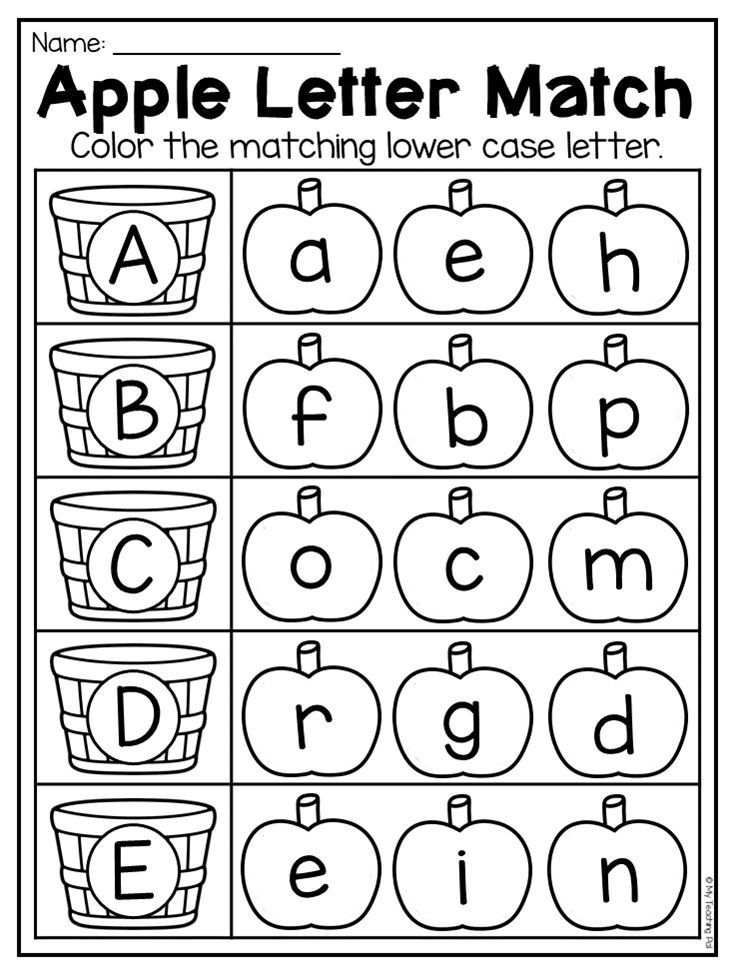
Whether your students know the original song or not, I can guarantee they will love this fun letter sounds video!
This list of alphabet YouTube videos contains some of our favorite alphabet songs to include in our morning routine. Have another favorite? Tell us down below! ????
Looking for an interactive way to teach letters and letter sounds? Little Readers Phonics is an engaging curriculum that contains everything you need to teach phonics this year!
It contains everything you need to feel confident teaching phonics including: scripted lesson plans, printables and worksheets, real photo materials, crafts and directed drawings, emergent readers, and so much more!
Pin this post for later:
Do you love free stuff?
CVC Decodable Readers
Sign up for my FREE email newsletter and receive five short vowel decodable readers!
I need these!
You May Also Enjoy These Posts
Reader Interactions
Hot in the Shop
More Products
All We're Missing is You!
Join us over on Facebook for even more great resources, ideas, and teaching tips for kindergarten and early elementary teachers!
Join Us on Facebook
Welcome Friends!
My name is Natalie and I am the face behind Natalie Lynn Kindergarten.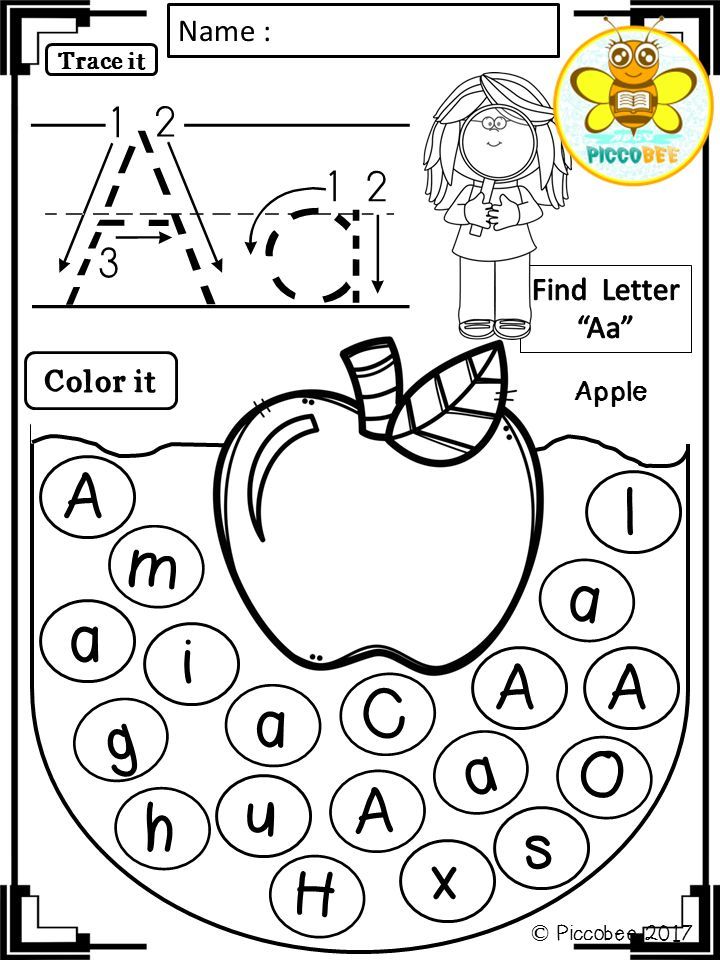 My passion is creating hands-on and engaging resources for the classroom and helping teachers to make learning FUN again! I love showing teachers how they can give students ownership over their learning and create meaningful learning experiences.
My passion is creating hands-on and engaging resources for the classroom and helping teachers to make learning FUN again! I love showing teachers how they can give students ownership over their learning and create meaningful learning experiences.
More About Me
Manage consent
Phonics Songs for Kids to Learn Letter Sounds The Fun Way!
Topic: English Language Arts Grades: Elementary School:
Come on all you letters!
Mastering letter sounds is a major step toward building strong reading and speaking skills. While it’s easy enough to lead your class through a round of phonics, the repetitiveness can get boring—for you and your students. Spice things up by bringing some fun music into your lessons! Don’t have time to go searching for videos and resources? No problem! We’ve put together this list of engaging phonics songs for kids to help them build a strong foundation.
Alphabet Song
Miss Patty combines letter sounds with American sign language in her alphabet song!
The ABC Song for Kids
The Kiboomers teach kids the alphabet with this ABC song featuring a picture for each letter.
Alphabet PE Exercise Song
Learn the alphabet while keeping fit with Miss Linky!
CVC Phonics Song
This video is designed to teach how to read CVC (consonant vowel consonant) words.
ABC Phonics Song
This animated phonics song was developed with speech therapists to form each letter sound correctly.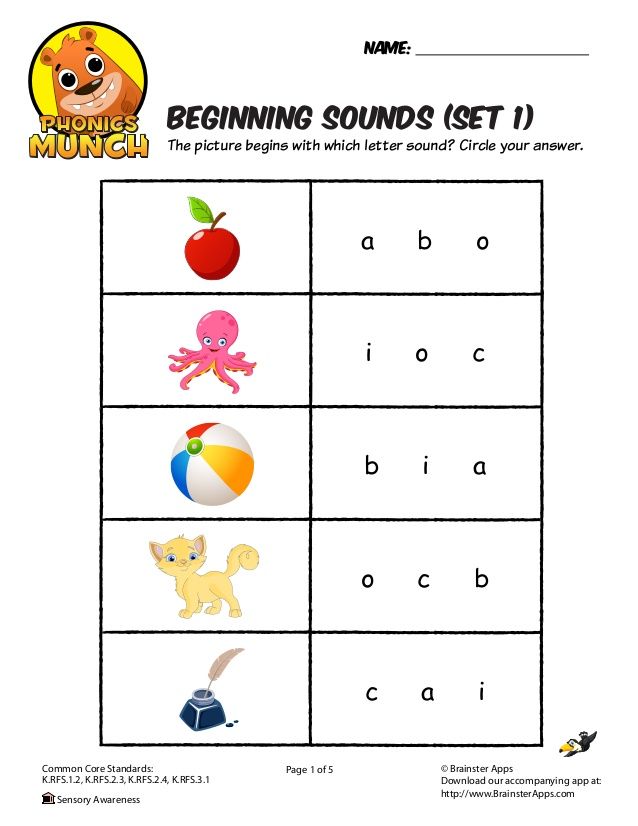
ADVERTISEMENT
Alphabet Boogie Song
“Come on all you letters from A to Z.” What a fun way to learn phonics!
The Big Pig Song
This singalong song is from Hooked on Phonics Learn to Read. “You laugh, you’ll cry. You’ll learn words that have the letter i.”
Crazy Phonics Song
This super version of the “Chit Chat Chicken” song created by Kids vs Phonics just gets faster and faster!
Phonics Song with TWO Words
This phonics song gives kids two word examples for each letter.
Alphabet Phonics Song
“A says a, a, apple and alligator.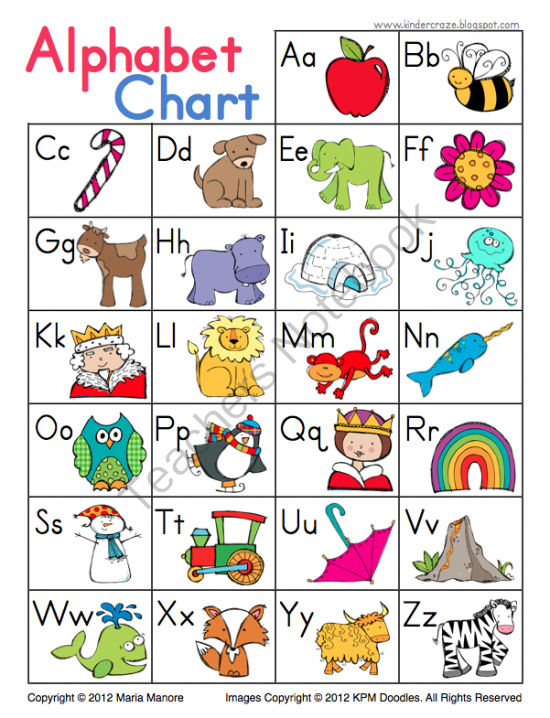 ” This catchy song will have kids singing along!
” This catchy song will have kids singing along!
Jolly Phonics Song
The entire set of 42 letter sounds is visually shown along with songs to practice learning.
Phonics Songs for Kids
Mother Goose Club uses music and fun graphics to teach kids phonics.
Learning Letter Sounds
This phonics song teaches children the alphabet and the beginning letter sounds.
The Alphabet Song
This song by Jack Hartmann is great for teaching and learning the alphabet and phonics.
Meet the Phonics
This 41-minute video will help students learn the different sounds that letters make.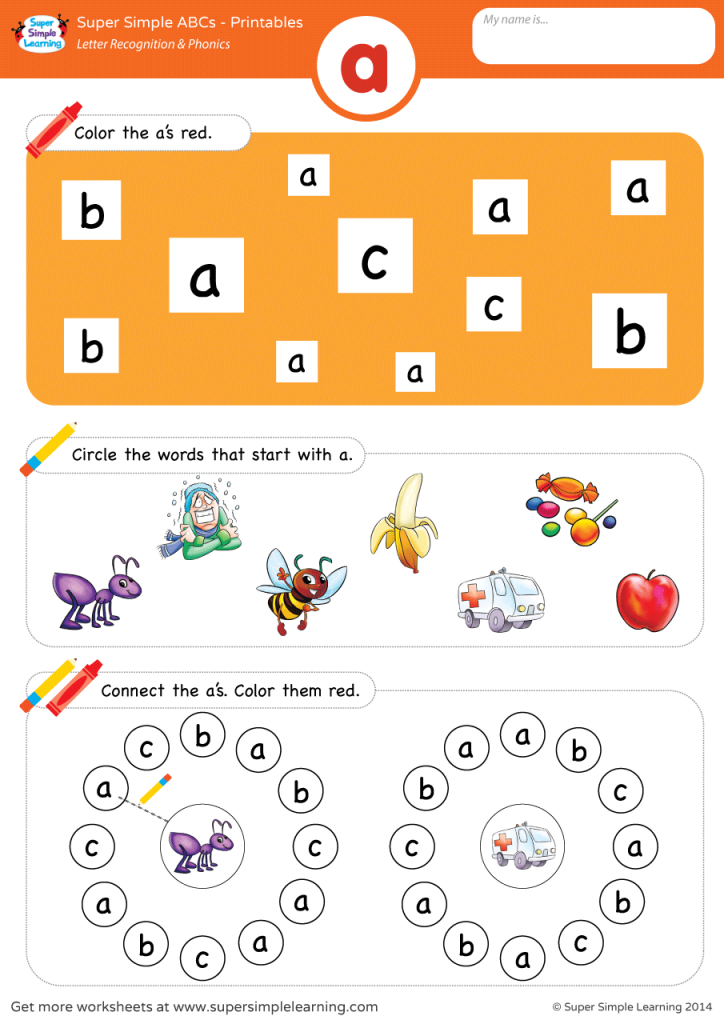
Plus, check out our fun phonics activities!
Want more classroom song suggestions? Be sure to subscribe to our newsletter so you can get our latest picks.
How to quickly learn the alphabet - learning letters with a child
Letters surround us everywhere. The child sees them in books and magazines, on product packaging, in shop windows. He can't help wondering what it is. Over time, he begins to understand that adults can read, begins to copy his parents, having learned a poem or a fairy tale by heart, and pretending that he is reading a book.
Experts recommend teaching a child to read shortly before school, since at an earlier age his brain is not yet ready to perceive such information. You can learn sounds with it, learn to distinguish them in oral speech, start mastering the alphabet. This pre-letter period is very important, because thanks to it the child will be able to learn to read fluently and understand what he read.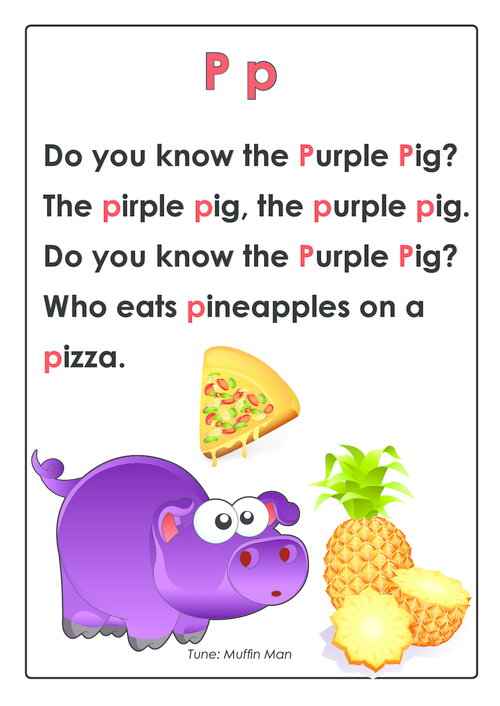 nine0003
nine0003
At what age do you start learning letters?
Many parents are sure that a child's development should start almost from the cradle. But neuropsychologists warn that learning letters and numbers before the age of 3 is harmful. At this age, the emotional and sensory sphere should be formed. If we force a child to learn, then we violate the laws of brain development, which can have negative consequences.
No specialist will tell you that at the age of 3 or 4 a child should know all the letters. Of course, if you wish, you can force him to learn the alphabet, but this will not be useful, but, on the contrary, can harm. The brain is ready for reading most often by the age of 5-6, and only in 20% of babies - by 4-5. Before this time, it is not worth studying letters. nine0003
But this does not mean that you can forget about the development of the child. At 3-4 years old, you need to work on the development of speech, teach the baby to ask and answer questions correctly, pronounce words, and study the world around him. You need to work on fine motor skills, teach him to dance, form a sense of rhythm, and so on.
You need to work on fine motor skills, teach him to dance, form a sense of rhythm, and so on.
These are the recommendations. However, all children are different. If a child has shown a sudden interest in letters, it means it's time to start learning. And it does not matter if it manifested itself late, for example, at 6 years old. The child should want to read, only after that you can study with him. nine0003
Psychologists note several signs that indicate a child's readiness for learning:
- The child perceives well what he has read by ear and can tell what the book is about.
- He knows how to build phrases, pronounce all sounds.
- Interested in what is written in a children's magazine, book or poster.
- Pretends to read, imitating adults.
If all these signs appear, you can start classes. You can’t put pressure on a child, force him to study, bribe him (“learn the letters - I’ll give you a chocolate bar”) - this will not achieve anything.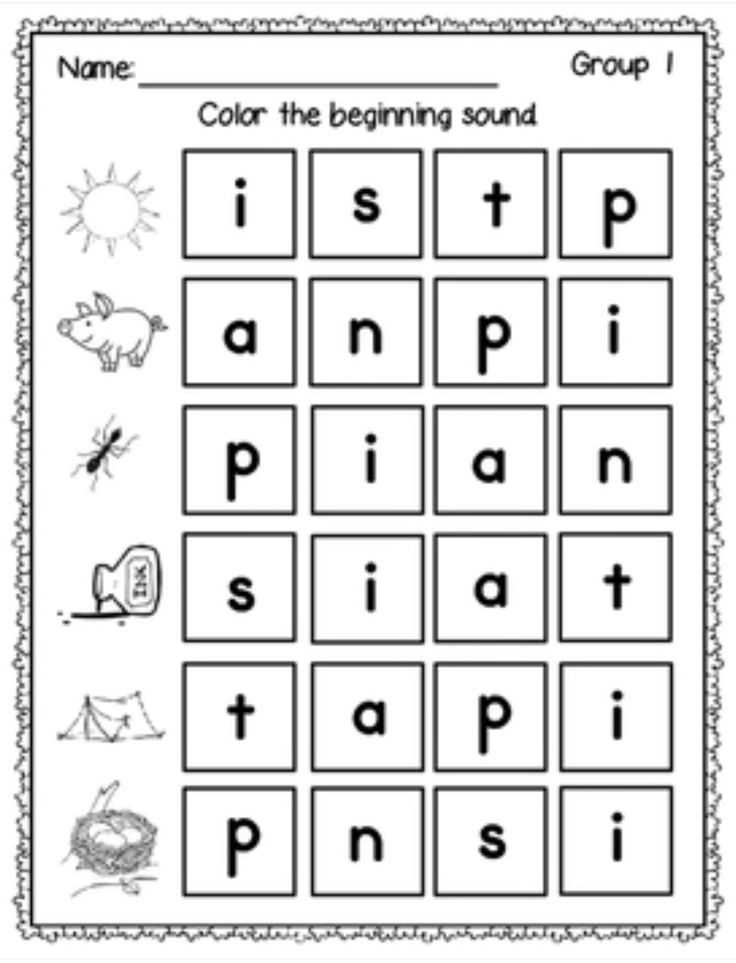 nine0003
nine0003
In those cases where the interest in letters appeared early, there is no need to give up classes. But do not overload the baby, work with him for no longer than 7 minutes, classes do not have to be done every day, you can take breaks of 2-3 days.
How to start learning the alphabet?
The child began to show interest in letters. No need to immediately load it with knowledge, cramming the alphabet. Move a little. The easiest way for children to remember the first letter of their name. Explain to him what this letter is, what it is called. You can ask him to find this letter in the text. Gradually, he will learn to highlight it, will pay attention to it. The first step has been taken. nine0003
Parents now trust their children's education to various children's tablets, phones and other similar toys. Remember that they are teaching letters, not sounds. Toddlers need to be taught precisely sounds, so it will be easier for them to master reading.
A letter is a graphic representation of sound, each has its own name.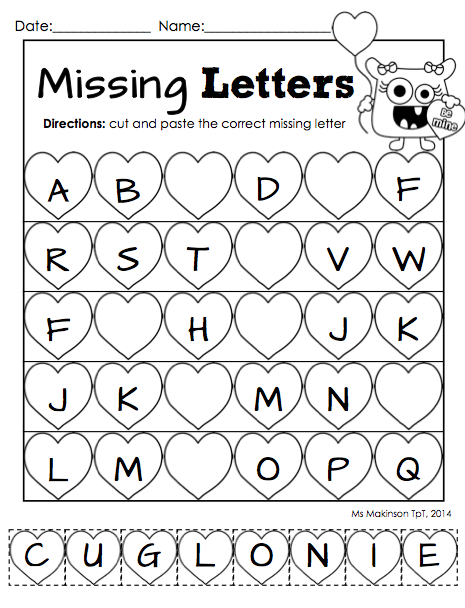 But learning to read, knowing only the names of the letters, is very difficult. Imagine that the child will need to read the word "ball". How will he do it? Just as he was taught: "beael". And all because he pronounces letters, not sounds. nine0003
But learning to read, knowing only the names of the letters, is very difficult. Imagine that the child will need to read the word "ball". How will he do it? Just as he was taught: "beael". And all because he pronounces letters, not sounds. nine0003
It is better to start learning with sounds, pronouncing them with the child. Parents themselves should not confuse sound and letter. Sound is what we hear. A bumblebee buzzes - this is a sound, a hammer knocks - this is also a sound. But far from all sounds we can get words. If we clap our hands, the sound will appear, but the word will not.
You can create a word from special sounds called speech sounds. Make sure that the child does not confuse the letter and sound. Explain to him that a letter is an icon that can be seen in a book or drawn on paper. Letters can be seen with the eyes and sounds can be heard. nine0003
General recommendations for teaching a child
If you decide to work with a child, remember the basic rule - he should be interested. You can't force him. At this age, the easiest and most accessible way of learning is through the game.
You can't force him. At this age, the easiest and most accessible way of learning is through the game.
It is difficult for kids to concentrate, to sit in one place for a long time, so classes should be short, 5-10 minutes each. As soon as you notice that he has become bored, switch to something else. If he forgot everything that you went through, do not get annoyed, repeat again until he remembers. If you overload your child with information, he will develop an aversion to learning. nine0003
At an early age, a child develops visual-figurative thinking, and only then - abstract-logical. This means that it is useless to draw letters on paper or a board. So you can't learn them. For him, it will be just a set of dashes.
The child needs a visual association. For example, if you are learning the sound "a", you can show him a picture of a watermelon or any other item that starts with that letter. Stock up in advance with soft cubes with letters, bright cards, coloring books, beautiful colored primers. nine0003
nine0003
Do not learn letters in alphabetical order. It is better to start learning with vowel sounds. The letters that are most often found in speech are studied first, then you can move on to rarer ones.
How to learn vowels?
First, explain to your child that all words are made of sounds, just as houses are made of bricks. The more sounds in a word, the longer it is. After that, you can proceed to the study of sounds.
Start with "a" . You can show the baby pictures that show objects whose names begin with this letter. Draw with him the mouth that makes this sound, note how we open it wide. Let him try to name the words that begin with this letter. Do not overload the child: 1 lesson - 1 letter. nine0003
Try to consolidate the acquired knowledge. So you go to the kindergarten, you saw a pharmacy, let the kid try to find the letter that you studied. Bought a children's magazine, see if the title has the letter "a" .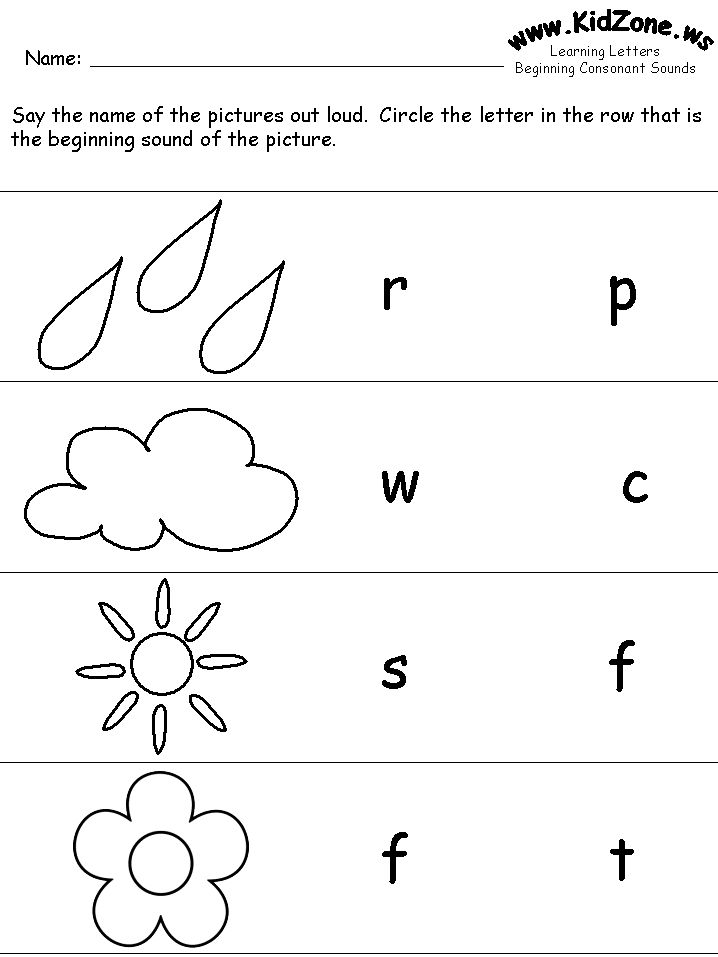 You can mold a letter from plasticine or dough, cut it out of paper. You can lay it out of sticks or sand.
You can mold a letter from plasticine or dough, cut it out of paper. You can lay it out of sticks or sand.
It will be much easier for you to captivate your baby if you always have blocks with letters, bright books, cards at hand. You can sing a song about a letter or listen to a funny verse. nine0003
So, study all the vowels one by one. At the end, you can explain that the sounds that you have already learned are called vowels. These are sounds that can be sung. Try to sing together "ah-ah-ah" or "woo-woo" .
Remember that we have 6 vowels ( a , o , y , e , s , and ) and 10 vowels. The letters i , e , i , i consist of 2 sounds. It is better to postpone the study of the latter for later, because there is no sound "i" , i is a letter consisting of 2 sounds.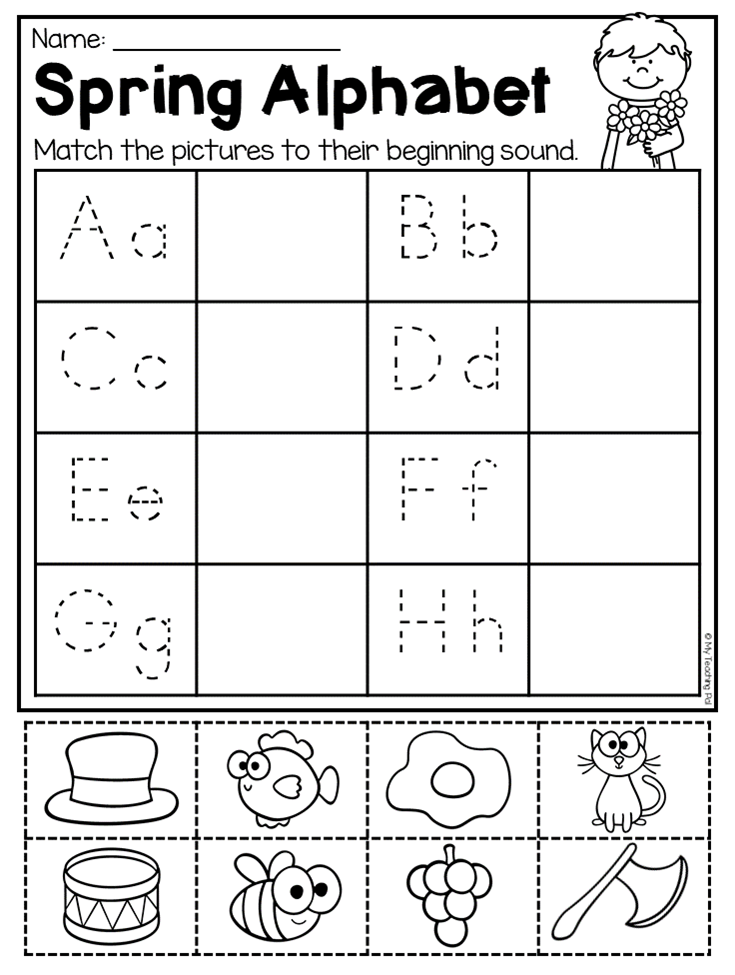 Do not confuse the child so that later educators and teachers do not have to retrain him.
Do not confuse the child so that later educators and teachers do not have to retrain him.
How to learn consonants?
After you have learned the basic vowels ( a , y , and , o ) you can move on to the consonants. You need to start with the simplest consonants ( b , p , m , n , t , g ). And here again we remember that we are teaching the child sounds, not letters. We know what to say0065 em ”, “ en ”, “ be ”, but children do not need to know this yet. The child must learn that this is the sound " mm " or the sound " nn ". After the baby learns simple consonants, you can proceed to the study of hissing.
Just like with vowels, knowledge needs to be consolidated. Children may confuse letters. To prevent this from happening, play associations. You can ask the children to think of what this letter looks like. Look for objects on the street that resemble this letter. For example, you walked past the horizontal bar, it is shaped like the letter " p ”, or look at the doorway, also resembles “ p ” in shape. Fold it out of pencils, look for it in store signs.
You can ask the children to think of what this letter looks like. Look for objects on the street that resemble this letter. For example, you walked past the horizontal bar, it is shaped like the letter " p ”, or look at the doorway, also resembles “ p ” in shape. Fold it out of pencils, look for it in store signs.
Alphabet learning techniques
There are several popular methods for teaching children to read and memorize the letters of the alphabet. You can use them, especially since specialists worked on them. But, no matter what method you work with, it is important to remember that your classes should not resemble lessons at school.
Children at this age should play and get the information they need through games. Therefore, after a short training part, immediately proceed to an interesting, gaming one. Creative activities are also very useful, with the help of which you not only study letters, but also develop the child’s fine motor skills, improve his drawing and coloring skills, and strengthen the ability to use scissors. nine0003
nine0003
Games and games
There are many games to help you consolidate your knowledge. We will give a few examples.
1. Find the words with the right sound . You need to prepare cards that show different objects. The child must choose among them those in which there is a studied sound. First, you can simplify the task: ask him to find words that begin with this letter.
2. Catch the sound . To stretch a little, mother and child walk around the room. Mom calls different words. As soon as the child hears a word with the desired sound, he stops and claps his hands. nine0003
3. Think of the word . Ask your child to come up with as many words as possible with a certain sound. You can do this in turn, for example, first the mother calls the word, then the baby.
The task needs to be complicated, that is, the sound can be not only at the beginning of the word, ask him to come up with a word in which this sound will be at the end or in the middle.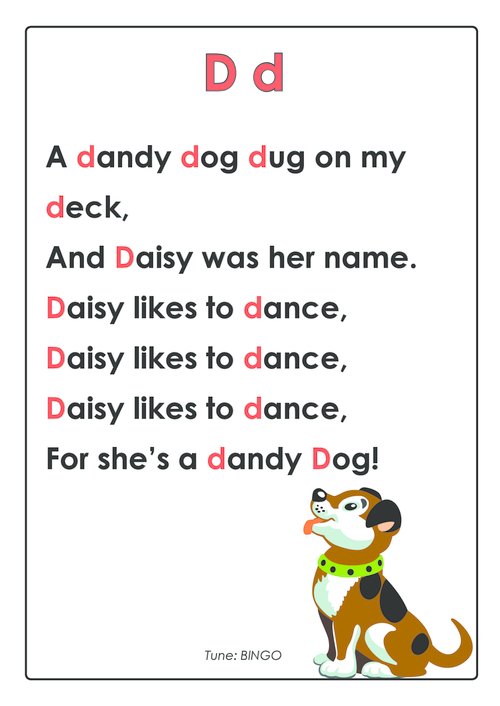 For example, you are learning the sound "a". First, you select words that begin with this letter - apricot, orange, then those that end in "a" - Moscow, jellyfish or contain the sound "a" in the middle - mosaic, eye. nine0003
For example, you are learning the sound "a". First, you select words that begin with this letter - apricot, orange, then those that end in "a" - Moscow, jellyfish or contain the sound "a" in the middle - mosaic, eye. nine0003
4. Determine where the sound is hidden. You need to draw a simple word scheme: three squares connected to each other. Each square denotes its own: the beginning of the word, the middle and the end. Put this word scheme in front of the child, give him a chip.
You name different words, and he must show on the diagram where the sound that you pass is located. For example, if you called the word "watermelon" (you can show a picture), the child must put the chip in 1 cell, and if the word "fox" - then in the 3rd cell. nine0003
5. Ball game . An adult throws a ball to the child and calls different words. If they have a letter being studied, he catches the ball, if not, then he does not catch it. To begin with, you can use words in which this letter is at the beginning, then complicate the task, that is, it can be in the middle or end.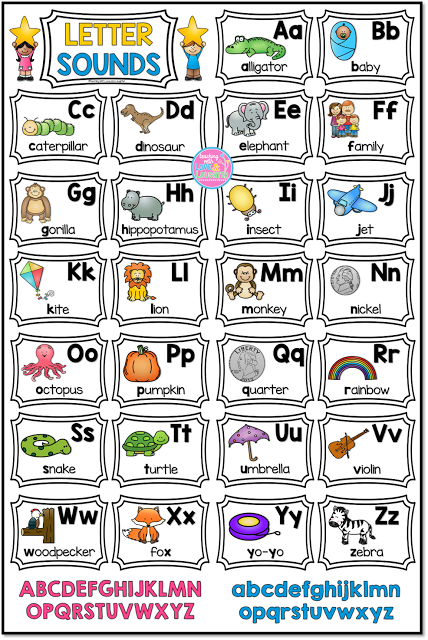
Author's methods of learning the alphabet
There are several recognized methods of teaching reading, each of which can be devoted to a separate article.
Zaitsev's cubes
The basis of Zaitsev's technique is a game, that is, children simply play with cubes (there are 52 cubes of different sizes in the set) and at the same time learn to read without making any effort. These games can be started from 6-12 months old, but up to 2 years old they are used like regular blocks, and children after 2 years old can start making words.
Zaitsev's main unit is a warehouse. It can consist of a consonant and a vowel, or a single letter. The basis of this method is the warehouse principle of reading. In addition to cubes, a large warehouse table is also used. nine0003
This technique has many advantages, the main of which is that any child can be taught to read. But there are also disadvantages, for example, over time, children will have to be retrained, because they remember that letters are indicated by one color, and the teacher enters his own colors, for example, red is a vowel.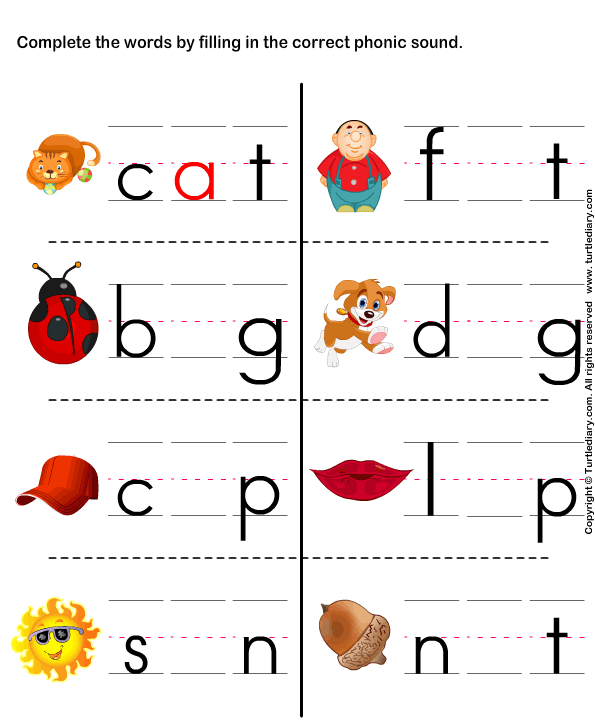 In addition, the child is used to the fact that words are divided into warehouses, and not into syllables. Yes, the benefits are very expensive.
In addition, the child is used to the fact that words are divided into warehouses, and not into syllables. Yes, the benefits are very expensive.
Doman's cards
The neurosurgeon Glen Doman developed his technique for children with CNS disorders, but then it was also used to teach healthy kids. He recommends teaching children to read not by letter, but by words, since letters mean nothing to him, and words have real designations. nine0003
For this, whole words are written on the cards in large print (at least 7-10 cm), for example, “mother” or “dad”, which must be quickly shown to the child, voicing each word. With the help of this method, even a small child can be taught to read. Training is necessarily carried out at an early age; after 5 years, the Glenn Doman method no longer works.
Olga Soboleva's Methodology
The principle of this training is based on the "two-hemispheric" work of the brain. The teacher tries to use the dominant type of memory, that is, the material is divided into 3 groups: for kinesthetics, visuals and auditory.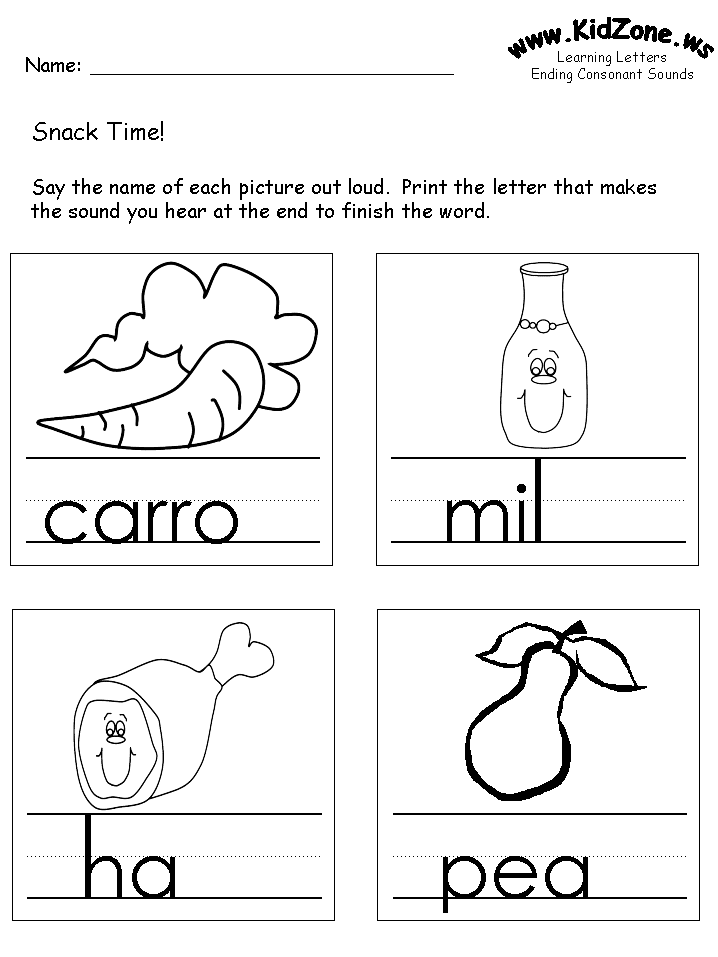 nine0003
nine0003
Many of its techniques are also used by ordinary teachers when teaching traditional methods to make it more interesting for children to study. Well suited for creative children and parents, it is not recommended for families where logic and structure come first.
Polyakov's method
Its author came up with 7 steps of learning to read, 70 lessons in total. Each lesson is detailed. They are held in the form of a game, take no more than 10 minutes. Stages 1 and 2 are the study of letters, warehouses, reading in warehouses. nine0003
Sergei Nikolaevich Polyakov himself, unfortunately, is no longer alive, but his work was continued by his son, as well as teachers who practice this method. If you wish, you can purchase books that describe in detail how to conduct classes, as well as video files with examples of classes.
Creative exercises
To reinforce the acquired knowledge, it is useful to conduct creative activities.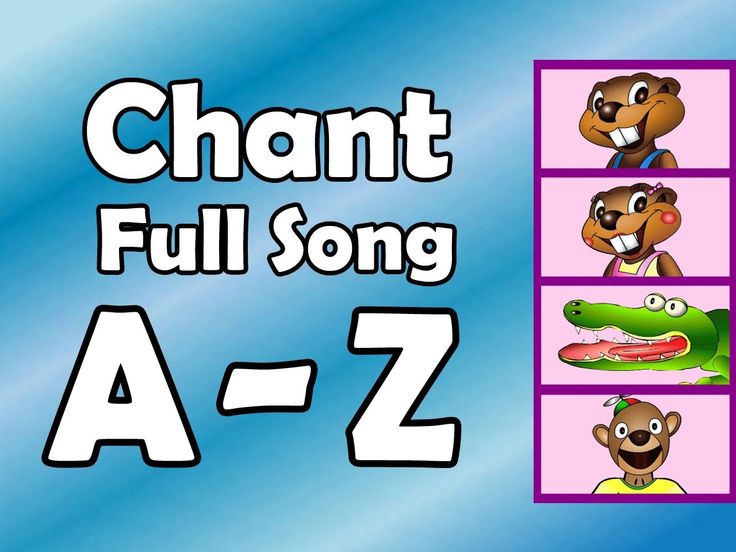 For example, you can make a beautiful alphabet together. We studied the letter - cut it out of cardboard. It is better to choose a dense material. If it is difficult for the baby, you can help him, and the child will decorate - attach beads, groats, sequins, beautiful fabric, etc. to it.
For example, you can make a beautiful alphabet together. We studied the letter - cut it out of cardboard. It is better to choose a dense material. If it is difficult for the baby, you can help him, and the child will decorate - attach beads, groats, sequins, beautiful fabric, etc. to it.
When you have collected the entire alphabet, you can decorate the children's room with it by connecting the letters into garlands, or hang it on the Christmas tree instead of toys. You can cut out paper blanks for letters, and the child must fold the whole letter from these parts.
Preschoolers love to draw and color. You can buy coloring books with letters, he will color them and remember what kind of letter it is. Or ask him to draw with felt-tip pens on paper, with chalk on a blackboard what you have already studied. But at this age, children should not be taught writing, this should be done by teachers in elementary school. The only thing you can teach your baby is to write in block letters.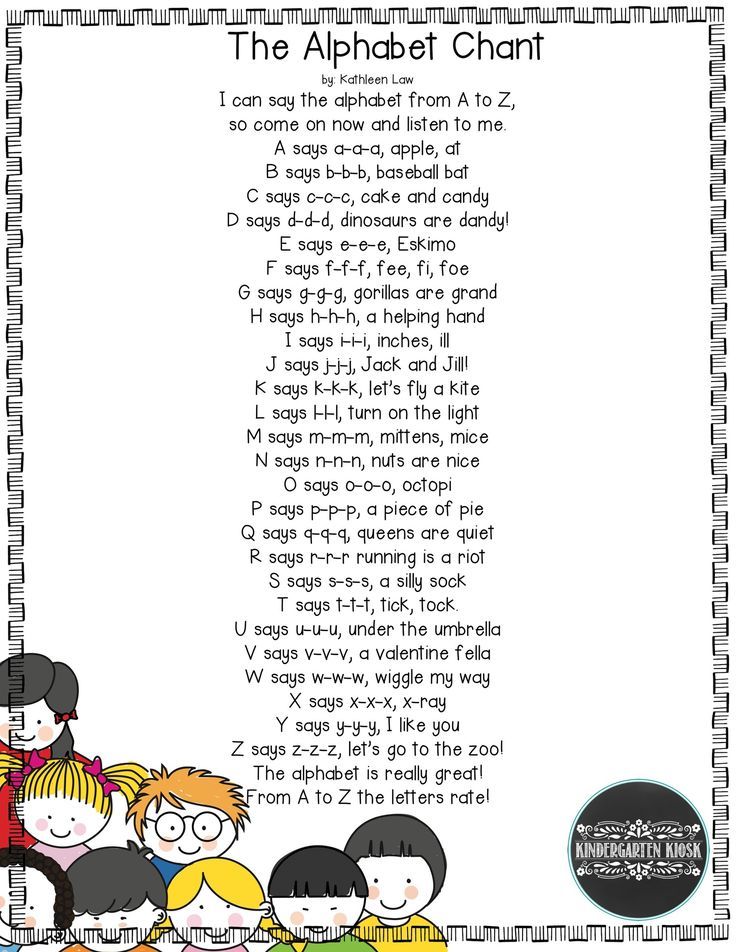 nine0003
nine0003
If you are baking pies, ask your child to make familiar letters out of the dough. You can sculpt from plasticine or clay, decorate figures with cereals or peas. These activities will not only distract the baby from the TV, but also help develop fine motor skills.
Does the child spend a lot of time with the construction set? Let him try to make a letter out of it, which you recently passed. Or he will lay it out from counting sticks, sand, buttons, beans. Just be careful not to push small parts up your nose or mouth. nine0003
As we can see, learning the alphabet is not a tedious and boring activity, but a kind of game. If you follow this rule, your baby will not only learn all the letters, but will eventually fall in love with books, magazines, and will read with pleasure.
Simulator for the development of thinking
The simulator is a database of 4000 tasks designed specifically to develop the thinking skills of students in grades 1-4
learn more
Poems about the alphabet, alphabet, letters for children
Poems for children about the alphabet and the alphabet, which are collected on our page, will be useful to teachers, educators of the extended day group, kindergarten teachers and parents who seek to give their children more knowledge and ideas about the world around them.
A verse about the primer
The first book
Here is my first book —
Is it familiar to everyone, perhaps?
Pictures - multi-colored,
Words -
Simple,
Light.
She
Will start me
Learn -
Read,
Write,
Work,
Live.
Will open everything
Roads to the distance
The first book for me -
PRIMER!
Valentin Luksha
A short verse about the alphabet
What is the alphabet?
You guys know him.
The letter in it always stands
In its special place.
We learn, we learn by heart
We are together the alphabet,
To help him find it
In dictionaries, where necessary.
***
ABC
What happened? What happened?
The alphabet fell off the stove!
Dislocated leg painfully
Capital letter M ,
D hit a little bit,
F completely crumbled!
I lost the letter Yu
I lost my crossbar!
Finding herself on the floor,
Broke her tail At .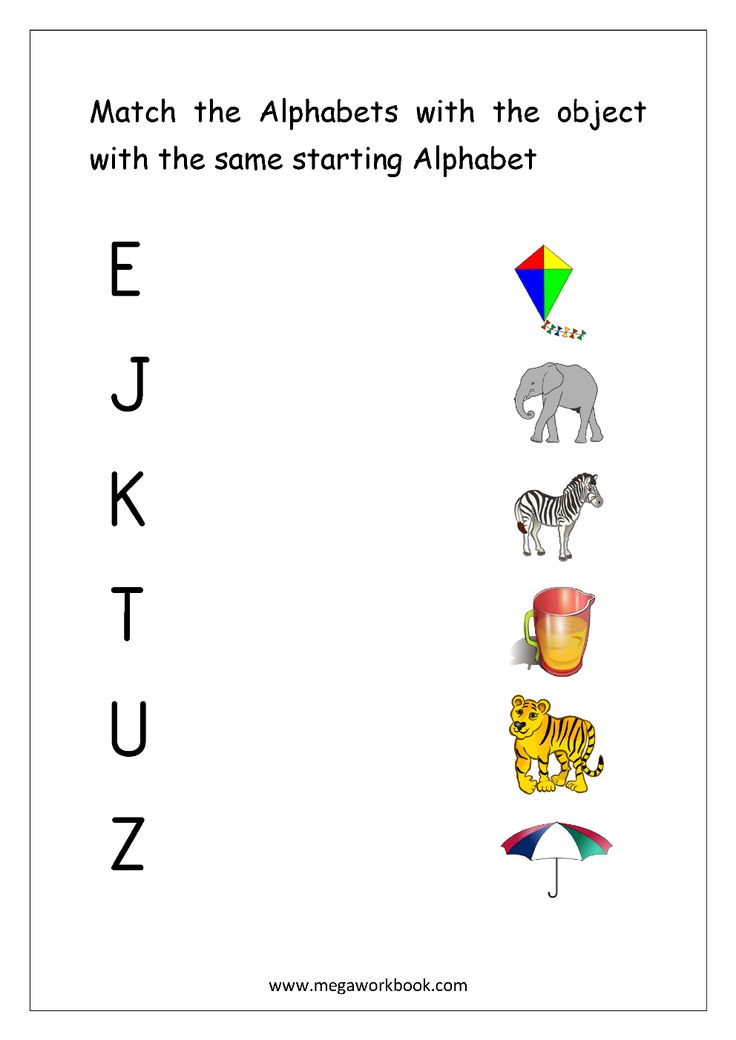
F , poor thing, so bloated -
There is no way to read it!
Letter P turned over -
Turned into a soft sign!
The letter C completely closed -
Turned into the letter O .
Letter A when I woke up,
Didn't recognize anyone!
Yu. Tuvim
***
Alphabet song
Thirty-three sisters
Written beauties,
They live on one page,
And they are famous everywhere!
They are hurrying to you now.
Glorious sisters, -
We ask all the guys
to make friends with them! nine0253 A B C D E F F F
Rolled us a hedgehog!
Z I Y K L M N O
We climbed out the window together!
P R S T U V X
Rooster is saddled!
C W W W E Yu Z —
That's all they are, friends!
Get to know them, kids!
Here they are, standing side by side.
It is very bad to live in the world
For those who are not familiar with them!
B. Zakhoder
***
Alphabet memorization verses
A, b, c, d, e, f, e –
We wash clothes. nine0253 F, g, i, d, j, l, m –
Quickly eat orange.
N, o, p, r, s, t, y -
Let's take a walk on the bridge.
F, x, c, h, w, u -
Ah, what a thicket!
b, s, b -
They will not be remembered in any way.
E, y, me -
That's all, my friends.
***
Alphabet
A B C D E F Y
Know your place!
F Z I Y K L M
Remember who is after whom!
N O P R S T U
Stand together, all in a row!
F X C W and W
Check in slowly!
b y b
Stand side by side like this!
Hurry up, E Yu Ya!
Here is the family in the collection of letters!
S.F. Zhuikov, M.M. Zelenina, E.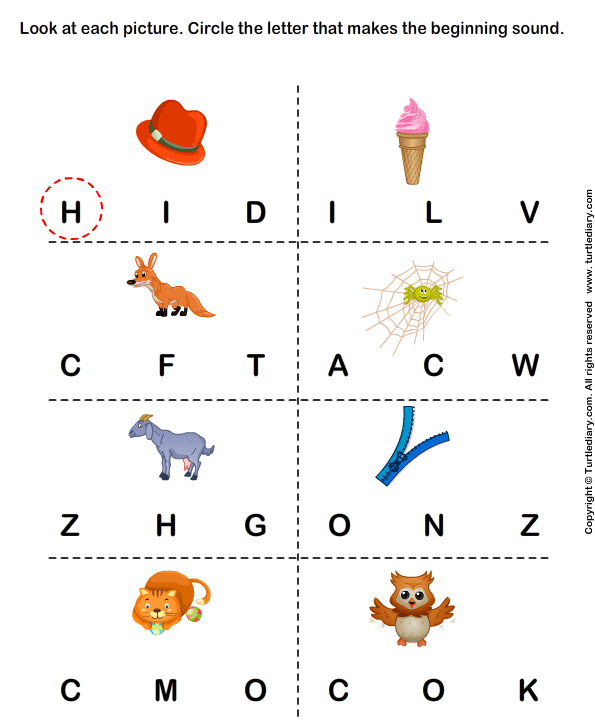 G. Carlson
G. Carlson
***
You memorize these letters.
There are more than three dozen of them,
And for you they are the keys
To all good books.
Don't forget to take
Magic Keys on the road.
You will find a way into any story,
You will enter any fairy tale.
Will you read books about animals,
Plants and machines.
You will visit the seas
And on the gray peaks...
Wonderful lands for you
Will open the way from " A " to " I ".
***
Forest Academy
One summer, on the lawn,
A very intelligent Maybug
Founded the Academy of Sciences for insects
.
Academy is open!
From dawn to dawn
Forest insects
Study primers:
A - Shark, B - Birch,
B - Crow, D - Thunderstorm ...
- Bumblebee and Fly, don't buzz!
Calm down Dragonfly!
Repeat, do not stray:
D - Road, E - Raccoon .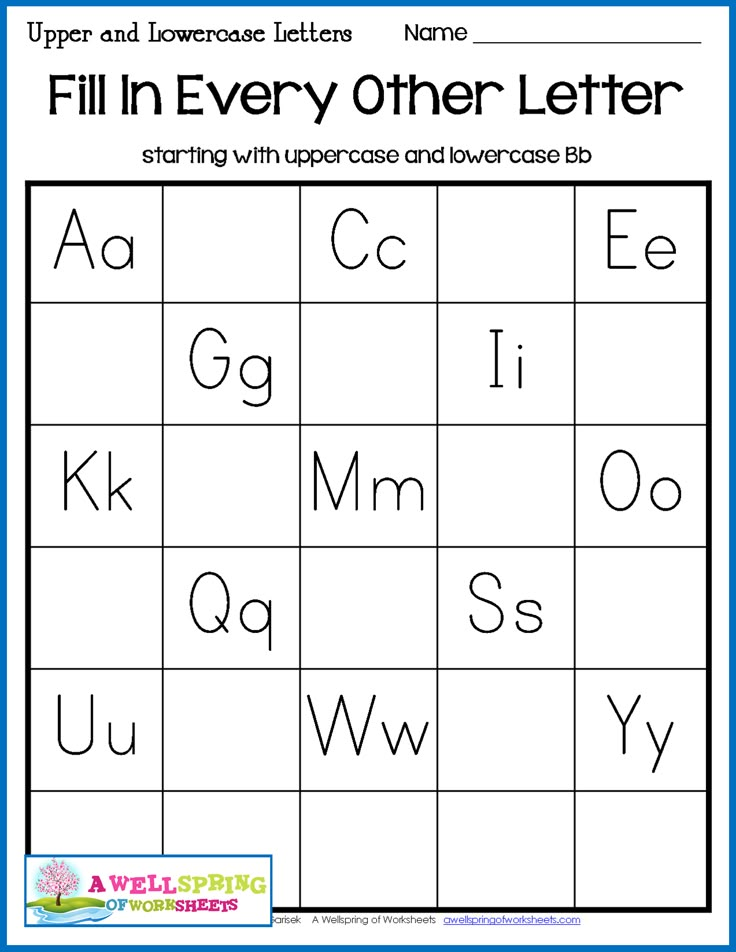 ..
..
Turn to the board, Grasshopper!
You sat down backwards!
F - Crane or Toad,
Z - Fence or Snake ...
- Don't be ridiculous, Komarik,
Move from Ant!
I - Needle, K - Nettle,
L - Larva, Linden, Meadow...
- Whom did you set the nets for?
Get out, evil Spider!
M - Bear, Mouse, Sea.
N - Burbot, but O - Deer ...
- They don't go to the academy
Those who are too lazy to study!
P - Parsley, R - Chamomile,
C - Knot or Morel ...
- Cockroach, don't make faces!
Don't tell me, Cricket!
T - Blade of grass, U - Snail,
F - Violet, X - Ferret ...
- After the first break
We will continue our lesson!
Insects learn the alphabet,
To become literate,
Because it's not enough -
Just crawl and fly!
S. Mikhalkov
***
At a feast at the mole
They have been living together for centuries
They live in harmony "G" and "K" ,3
When it is replaced by "G",
Which is similar to a heron in appearance
And stands on one leg.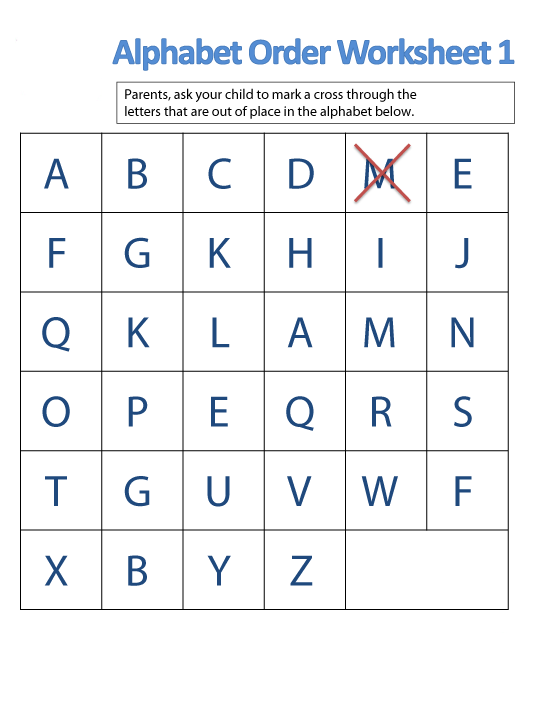 nine0003
nine0003
Once discovered a MOLE
There is a huge GROTTO in the garden.
He took out a bag of BONES
And invited GUESTS.
JACKAL from afar
CHAGAL to his feast.
Toptygin took off his hat -
Jackal vanished from fear.
And the crab Fight the CRAB
Come on in the shade under the HORNBEAM.
The hedgehog curled up into a ball,
His sleep became DEEP.
And, having a bite of the BARK,
A hare under the MOUNTAIN,
To excel in the GAMES,
Danced to the pain in the calves.
Naughty letters
Sparrow jumped -
Somewhere I found CRUMPS.
He immediately ate one
Right on the path,
The rest did not have time:
CATS interfered.
"K" in the fitter's pocket - jump! -
And in the pocket - ROLLERS.
From the pocket at the same moment
RABBITS jumped out!
Somehow the gazelles decided
With the letter "G" to start GAMES,
And for this they almost ate
Their ruthless TIGERS!
Such a laugh:
"R" fell on the CAT!
The cat is not a cat now, but a MOLE,
He digs an underground passage.
How the letters get married
How lonely the poor man is M ,
He completely withered from melancholy,
Like a May bug in a box.
And here is the beautiful letter U
Once he met him
On the alphabet path.
And poor M said pleadingly:
-Let's get married with you.
But was met harshly:
-You M , I U , and together MU ?
I don't need to moo all my life. nine0253 Goodbye, I'm not a cow.
Our M was terribly offended.
But the letter Y was proposed by him.
And she agreed.
She said to him: — We
Let's make a word together WE ,
And it's so beautiful.
Y. Vronsky
Learning the letter A, ready-made assignments
Joyful, dynamic poems with funny stories, adults and children will definitely like them. From them, the guys learn that there are 33 sister letters in the Russian language.